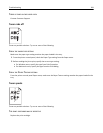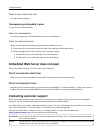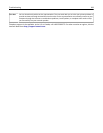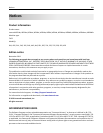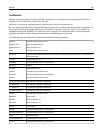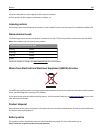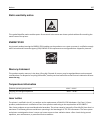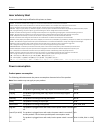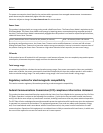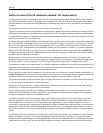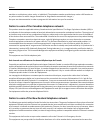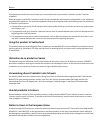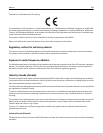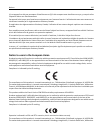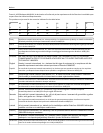
The power consumption levels listed in the previous table represent time-averaged measurements. Instantaneous
power draws may be substantially higher than the average.
Values are subject to change. See www.lexmark.com for current values.
Power Saver
This product is designed with an energy-saving mode called Power Saver. The Power Saver Mode is equivalent to the
EPA Sleep Mode. The Power Saver Mode saves energy by lowering power consumption during extended periods of
inactivity. The Power Saver Mode is automatically engaged after this product is not used for a specified period of time,
called the Power Saver Timeout.
Factory default Power Saver Timeout for this product (in minutes): 110V = 45 minutes, 220V = 60 minutes
By using the configuration menus, the Power Saver Timeout can be modified between 1 minute and 240 minutes.
Setting the Power Saver Timeout to a low value reduces energy consumption, but may increase the response time of
the product. Setting the Power Saver Timeout to a high value maintains a fast response, but uses more energy.
Off mode
If this product has an off mode which still consumes a small amount of power, then to completely stop product power
consumption, disconnect the power supply cord from the electrical outlet.
Total energy usage
It is sometimes helpful to calculate the total product energy usage. Since power consumption claims are provided in
power units of Watts, the power consumption should be multiplied by the time the product spends in each mode in
order to calculate energy usage. The total product energy usage is the sum of each mode's energy usage.
Regulatory notices for electromagnetic compatibility
This section contains regulatory information pertaining to electromagnetic compatibility.
Federal Communications Commission (FCC) compliance information statement
This product has been tested and found to comply with the limits for a Class A digital device, pursuant to Part 15 of the
FCC Rules. Operation is subject to the following two conditions: (1) this device may not cause harmful interference,
and (2) this device must accept any interference received, including interference that may cause undesired operation.
The FCC Class A limits are designed to provide reasonable protection against harmful interference when the equipment
is operated in a commercial environment. This equipment generates, uses, and can radiate radio frequency energy
and, if not installed and used in accordance with the instruction manual, may cause harmful interference to radio
communications. Operation of this equipment in a residential area is likely to cause harmful interference, in which case
the user will be required to correct the interference at his own expense.
Notices 289



